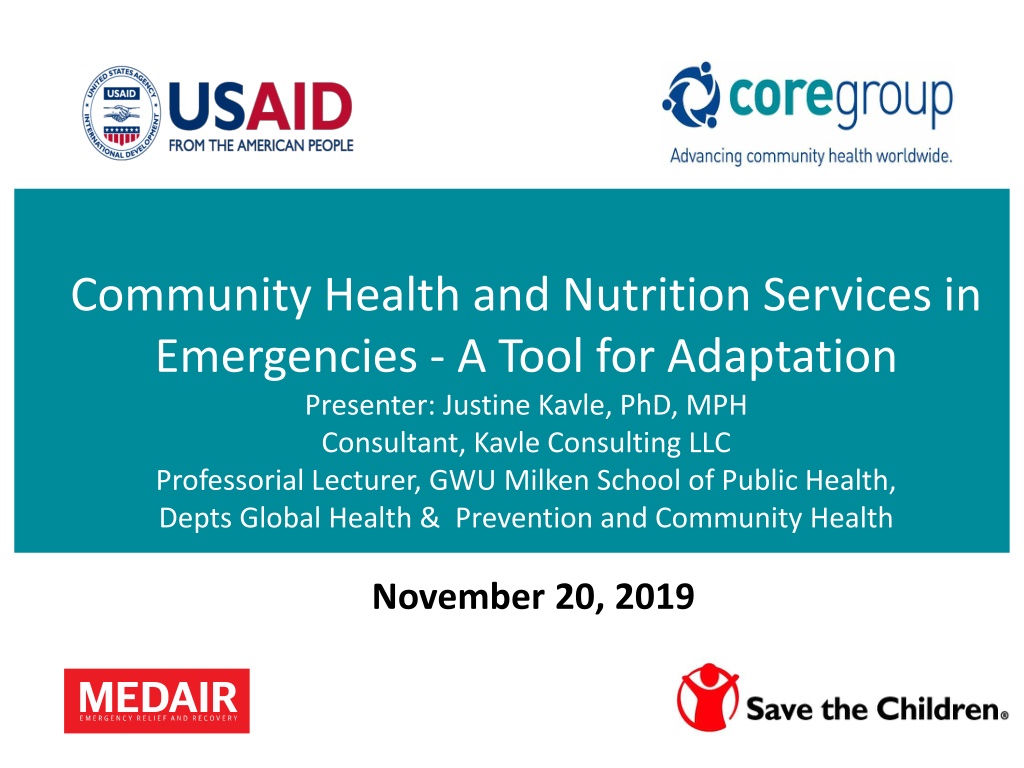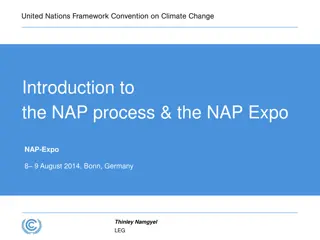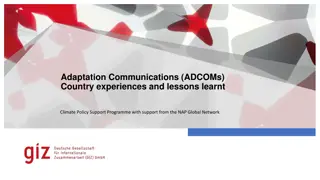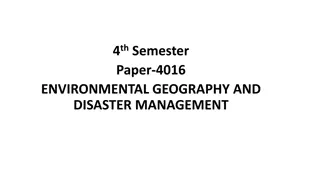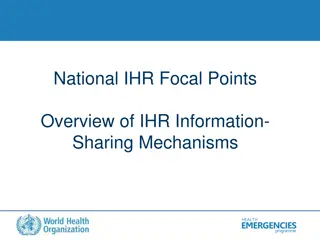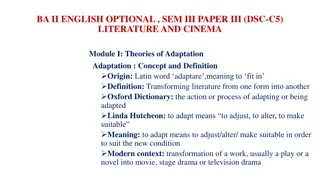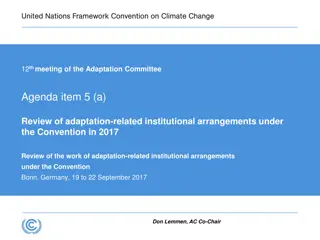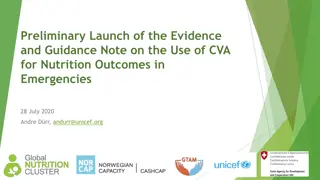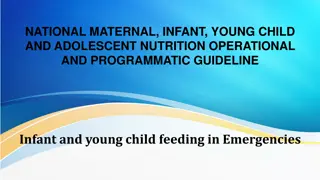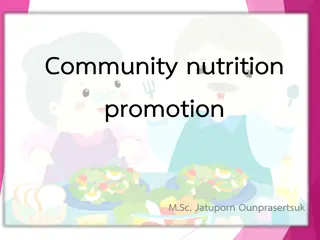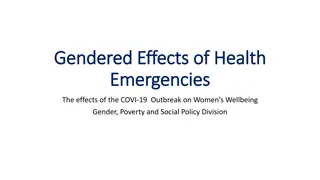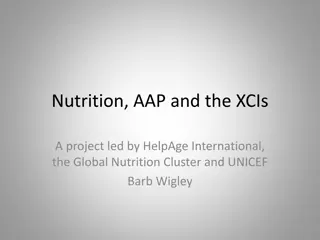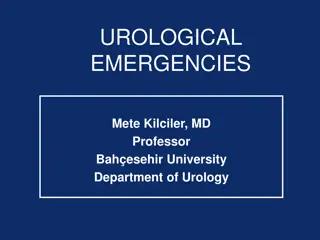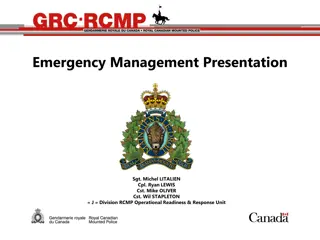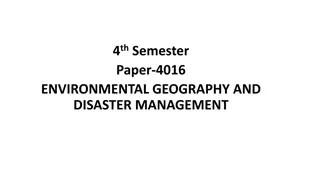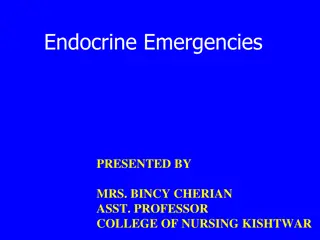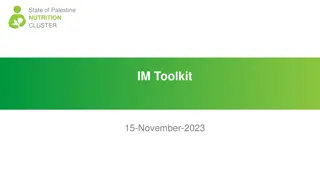Community Health and Nutrition Services in Emergencies - Framework for Adaptation
This presentation by Justine Kavle discusses the CHSD Framework Tool designed to plan and adapt community-based health and nutrition interventions for emergency settings. It emphasizes tools for action planning, best practices, and evidence-based approaches to strengthen programs in both humanitarian and developmental contexts. Key elements include CHWs, Care Groups, iCCM, IYCF, CMAM, and community mobilization during crises such as the Ebola outbreak. The framework aims to enhance community participation and support positive health outcomes during emergencies.
Download Presentation

Please find below an Image/Link to download the presentation.
The content on the website is provided AS IS for your information and personal use only. It may not be sold, licensed, or shared on other websites without obtaining consent from the author. Download presentation by click this link. If you encounter any issues during the download, it is possible that the publisher has removed the file from their server.
E N D
Presentation Transcript
Community Health and Nutrition Services in Emergencies - A Tool for Adaptation Presenter: Justine Kavle, PhD, MPH Consultant, Kavle Consulting LLC Professorial Lecturer, GWU Milken School of Public Health, Depts Global Health & Prevention and Community Health November 20, 2019 dating Session
CHSD Framework Tool Agenda Highlights from a CORE Group led Humanitarian- Development Nexus literature review Development and usage of the framework tool Preliminary results and lessons learned
CHSD Framework Tool Background Assists in the planning, assessment, and adaptation of community-based approaches and interventions for use in humanitarian emergencies Approaches have been primarily implemented in development context
CHSD Framework Tool Objectives 1. Provide considerations for countries to consider how these community-based interventions could be applied to emergency settings 2. Provide tools for action planning, based on global guidance/best practice and recent evidence to strengthen community-based programming for emergencies
CHSD Framework Tool Methods for development of tool Based on Core Group- lit. review/ key evidence Decided on the approaches/interventions, descriptions, key elements Highlighted a few examples of these approaches that can be adapted, within the tool
CHSD Framework Tool Synthesis - Core Group-led Literature review CHWs, Care Groups, integrated Community Case Management (iCCM), Infant and Young Child Feeding (IYCF) and Community-based Management of Acute Malnutrition (CMAM), including mother to mother support groups and social accountability efforts w/ scorecards work in humanitarian & development contexts. Community s ability to participate and willingness to be mobilized. During the Ebola crisis, CHWs remained active & continued to provide health services. CHW AIM - can provide guidance on how to build capacity of CHWs. Care Groups have proven effective in achieving positive health and nutrition outcomes in both humanitarian and development contexts. Specifically, in the humanitarian context, Care Groups demonstrated behaviour change and rapid dissemination of information, peer support, and provided monitoring, screening and referrals, when the model was adapted.
CHSD Framework Tool Synthesis - Core Group led - Literature review iCCM is an effective, integrated community-based strategy to reduce morbidity and expand coverage. Use of CHWs is a key driver of the success -> leveraging the participation and mobilization of CHWs, trusted members of the community. IYCF/ IYCF-E, is a major preventative factor for malnutrition and can be integrated across different sectors including food security, WASH, and education. Government support to integrate CMAM into the health system is key for sustainability with CMAM surge. Factors for success within the development- humanitarian nexus are initiatives that leverage participation and mobilization, as well as demonstrate integration and country ownership.
CHSD Framework Tool Topics: based on Core-led literature review* Table: Description of key elements of each approach & consideration for use and/or adaptation 1. Care Groups 2. CMAM surge approach 3. Mother s involvement- early detection/screening (MUAC) 4. Integrated community case management (iCCM) which includes treatment of childhood illnesses + strengthen integration with nutrition (screening & IYCF) + treatment of acute malnutrition 5. Infant and young child feeding in emergencies (IYCF-E) * Considering expanded role of CHWs
CHSD Framework Tool Checklist Sample of elements, walk through tool What type and stage of emergency (acute, protracted)? How long are you likely to be able to intervene (funding cycle, suspected emergency timeframe, security situation, access)? Who is your target population IDPs, refugees, host, nomads? Are there any community networks that exist already? Are there national policies or guidelines for community health service delivery? Any national or local guidelines for community level incentives or payment?
CHSD Framework Tool Understanding the utility of tool Circulated for countries feedback (end Oct 2019) Presented at Medair workshop for facilitated discussion (mid-November 2019) and feedback collated from 10 humanitarian country programs in Africa, Asia & Middle East Three rapid qualitative interviews conducted with Medair country staff to gain an understanding of use, strengths, weaknesses, unclear areas, suggestions to improve Syria, Somalia & South Sudan
CHSD Framework Tool How did you use /plan to use the tool? For current projects, this tool is a good one to check if there is opportunity for improvement (such as expanded CHW role) and for new projects later on that might be including any of the approaches in the tool (if applicable in the context). Some approaches cannot be implemented in our context as we are facing a lot of challenges for instance, the care group model. We have adapted and used the tool to improve the service delivery for the hard to reach. We can further adapt iCCM approaches and integrate to implement management of uncomplicated Acute Malnutrition. Lebanon staff members Somalia staff members
CHSD Framework Tool How did you use /plan to use the tool? We are using some of the IYCF toolkit, the tool reminded us of this and was a prompt to look at more IYCF-E resources online. Syria staff members Will help to guide .. service quality improvement tool for any community-based interventions. Bangladesh staff members. We are planning to improve the community engagement by setting up the care group model. This will help to improve health and nutrition related behavior. DRC staff members
CHSD Framework Tool What are the strengths (+) of the tool?* (+) Comprehensive/good to have different approaches laid out in one tool - I-2, W-6 (+) Provides useful information to begin/improve intervention implementation - I-1, W-4 (+) Provides links to read more about interventions - I-1, W-4 (+) Useful for planning in short-term emergencies and long-term development scenarios - I-3, W-1 (+) Provides a good summary of interventions - I-1, W-2 *I interview, W = workshop, # = number of times discussed
CHSD Framework Tool Strengths of the tool: key quotes The good thing is there s a lot of information in one place with links to get more detail if you want it. Sometimes we face implementation challenges in community health programs but if we use this tool, I think we can improve our interventions. Somalia team member Syria staff members
CHSD Framework Tool What are the weaknesses (-) of the tool?* (-) Assumes a high level of prior knowledge of the interventions - I-1, W-2 (-) Could be better tailored to Medair countries - I-2 (-) Approaches (3rd column) aren t structured uniformly - I-2 *I interview, W = workshop, # = number of times discussed
CHSD Framework Tool Weaknesses of the tool: key quotes It assumes a high level of knowledge of what Care Groups are or what iCCM is, which is okay and worked alright for me, but looking at it with someone else on my team, she was like, I don t know what half of these things are. It seems like a library of different resources, and I couldn t really see how this was useful to me other than presenting resources to my team. But then when you get to the checklist, the questions can guide your thinking on which of the tools is appropriate. Syria team member
CHSD Framework Tool Do you have suggestions for the tool?* Provide guidance based on responses to the checklist. (I-1, W-5) Convert the checklist into a decision tree or flowchart. (I-1, W-4) Provide do s and don ts/strengths and weaknesses in 3rd column of the table for each intervention. (I-1, W-1) Elaborate on descriptions. (W-2) Purpose of tool needs to be clearer Remove information about the literature review/ Move lit review to the end as an appendix/ provide sources (1 for each) *I interview, W = workshop, # = number of times discussed
CHSD Framework Tool Suggestions for tool: key quotes I think the setup is clear, but it s a bit hard to read. I think there s some work to be done on how the document is written . South Sudan team member For the area where it says key elements , I think there should be more structure on what is the context, what are the do s, what are the don ts, because now it s kind of a mixture of information on the program you re describing, some advice on when or when not to implement it, and in some areas it says something about the timing of the implementation, but how this information is structured is not the same in each approach. South Sudan team member The checklist has good questions, but it s not totally clear if you answer a certain way, how that would guide your decision-making. Syria team member
CHSD Framework Tool Key lessons learned Countries liked the checklist, though would like additional guidance on how to use the information collected Countries have varying levels of knowledge of different community approaches and need resource list/ additional information (maybe in appendix) Countries did provide feedback on aspects that could be included (growth monitoring, mother to mother support groups), though they varied by countries, and were lots of different suggestions Countries suggested content that may be beyond nutrition & health (i.e. security, male engagement) & questioned how to handle those aspects
CHSD Framework Tool Next Steps Information compiled to update the tool Information will be written into a case study and an accompanying brief Will be circulated to Task force, subsequently
Thank you. Discussion/Questions/Comments
